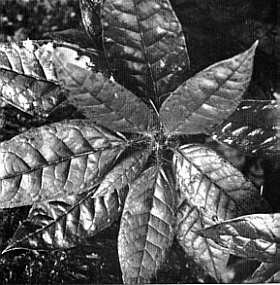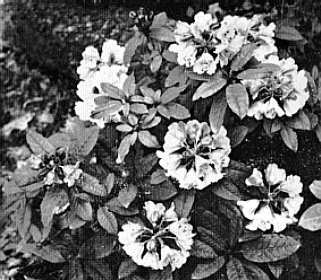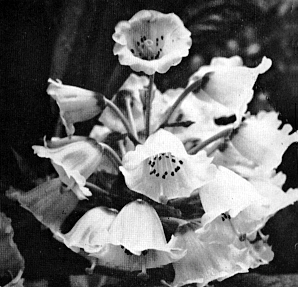Two Species from the Rock Expedition
Rudolph Henny

|

|
| Fig. 42. Distinctive foliage of R crinigerum |
Fig. 44. A good form of
R. crinigerum
from the Rock expedition. C. Smith photo |
It has now been well over a decade since the A.R.S. Rock Expedition to China returned its vast amount of rhododendron seeds. Many plants from the expedition have to this date not bloomed, others have shown promise of finer forms, some few have shown poorer forms than were present in our gardens formerly. Singularly enough another decade will pass before many others bloom. Many thousands of plants have to this date been lost due to climate and poor growing practices. As of this date though many remain, and every season brings reports of certain numbers blooming for the first time. During the season past two very fine numbers bloomed in the garden of Cecil Smith. R. sinogrande (R.182) (FIG. 42) and R. crinigerum . As stated in the brief notes on species in "Rhododendrons for Your Garden" R. sinogrande (R.182) is the true species, and is not to be confused with plants wrongly named as such growing in some gardens and nurseries. R. sinogrande has the striking large foliage that once seen is usually not confused or forgotten. The twenty-five bloom per truss were of great substance and lasted for weeks, but were just a bit disappointing in their very pale yellow color.

|
|
Fig. 43.
R. sinogrande
(Rock)
C. Smith photo |
R. crinigerum was sent back in several numbers, and several of the group had most outstanding habit and foliage. (FIG. 42). These better forms should be propagated as clones, since many of the plants of R. crinigerum known to our gardens formerly were plants of rather poor habit. The better forms have very dense foliage and compact habit much like a well grown R. haematodes .